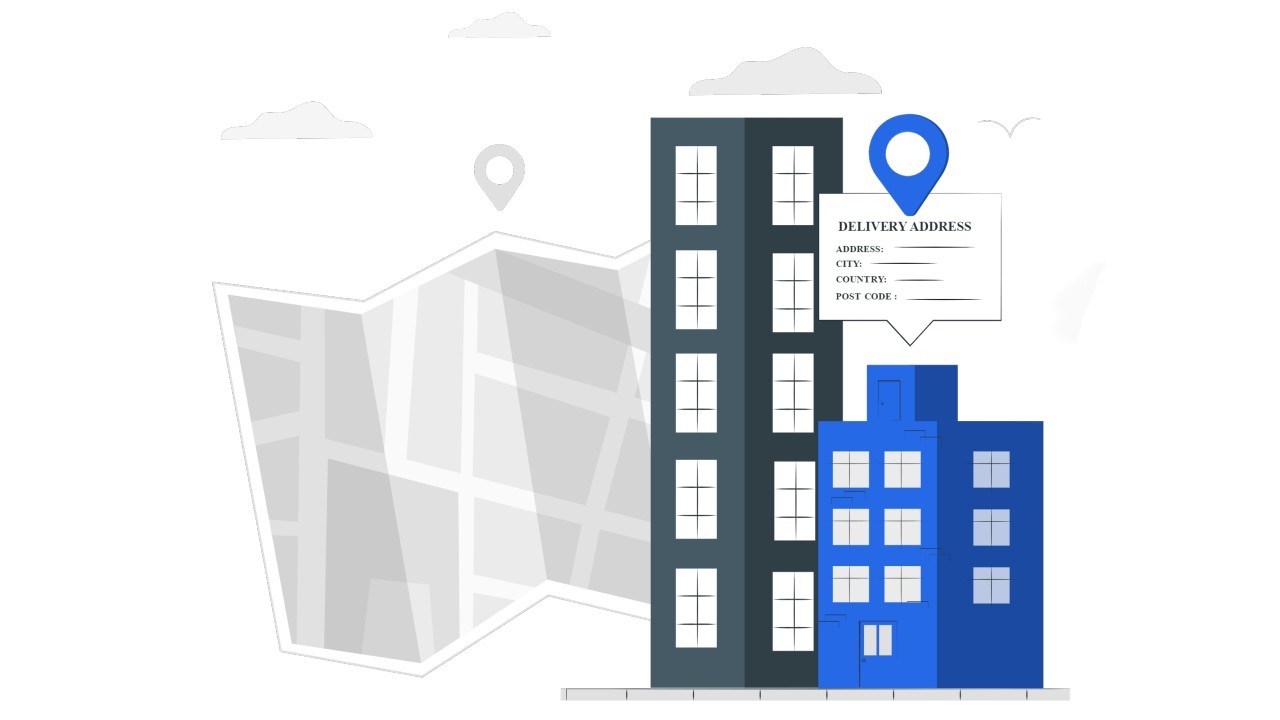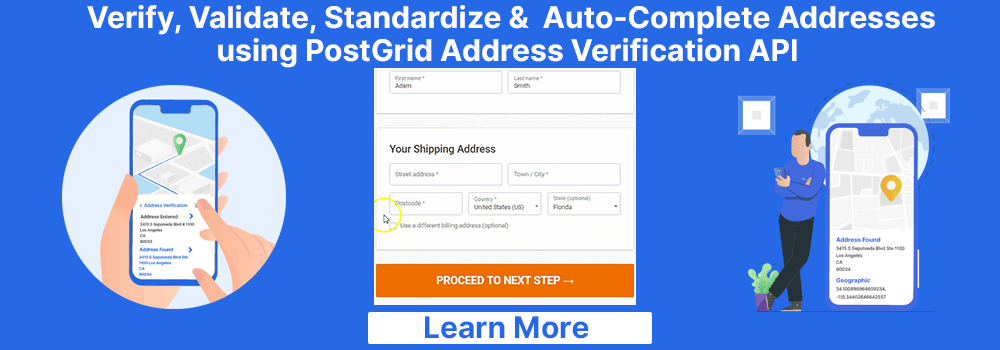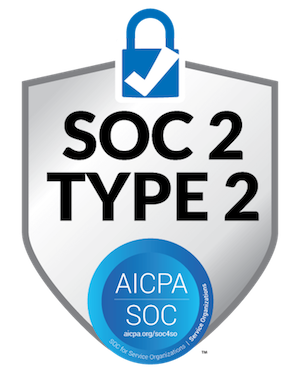
Japan Post Address Validation: How Does it Work and Its Alternative
Japan Post was established in 1871 as a modern postal service to connect Tokyo, Kyoto, and Osaka. According to a Statista report, the postal service handled 17.46 billion mail items in the fiscal year 2024. Even though many mailers and packages are delivered on time, misdelivery, returns, or delays are not rare with the postal organization. A Gartner report also suggests that organizations have lost around $12.9 million due to poor data.
Invalid or incomplete address data can severely impact an organization’s shipment operations, marketing campaigns, and location intelligence attempts. Japan Post address validation is a valuable solution to eliminate such problems by cross-checking addresses before shipping mail items. But how do you ensure the maximum accuracy while handling address data? This blog will give you complete insights into why Japan address validation is necessary and how it works.

Key Takeaways
- Japan Post address validation helps ensure the accuracy and deliverability of postal addresses.
- Japan Post doesn’t provide any comprehensive validation and standardization solutions.
- Users can only use postal codes or area information to find insights about a location.
- You must enter a valid prefecture and business name to find a 7-digit postal code.
- The postal services provide a downloadable PDF to manually locate prefectures, cities, towns, and villages.
- Japan uses Kanji and Romanji address systems to write addresses in Japanese and English, respectively.
- Using Japan Post’s address validation tools, you cannot validate street or city names.
- Bulk verification is impossible, considering the manual nature of validation tools by Japan Post.
- Users cannot obtain premise-level information while using Japan Post’s tool.
- Businesses need a comprehensive address validation tool to ensure accuracy and deliverability.
What is Japan Post Address Validation?
It refers to individuals or businesses using an online solution to determine the accurate Japanese addresses by cross-verifying against official databases. This tool helps you ensure the deliverability of mailers, reduce delays or failures, and gather precise location intelligence. Businesses can save time and money by streamlining their shipments and delivering mail or packages to the correct location.
Japan Post doesn’t provide any official comprehensive address validation solution. You can only use a PIN code or area locator tool from their website. They don’t offer dedicated tools to determine if your address is deliverable before sending it. You can only alternatively visit the official Japan Post website and enter a valid inquiry code number to check the location of your mail or package. However, it doesn’t give you any idea about the deliverability. Postal workers might reach the location but fail to find any valid recipient to receive the mail or package.
Comprehensive address validation includes various steps, such as parsing, verification, standardization, fuzzy matching, and autocomplete. The first step is parsing, where you must break down Japanese addresses into postal codes, prefectures, cities, towns, districts, building names, and apartment numbers. We need to use standardization to reformat the address string into the officially accepted format. Fuzzy matching is responsible for removing mistakes and inconsistencies from each entry.
The address verification process begins by cross-verifying the addresses against official databases like the Japan Post or other authoritative sources. This process must work in real-time to maximize efficiency for individuals and businesses. However, Japan Post can only help you with postal codes and area information. Let’s find out how they execute this.
How Does Japan Post Address Validation Work?
Japan Post helps you find postal codes, associated areas, towns, and names of localities in the country. However, it doesn’t provide a full-scale online address validation tool to validate your addresses quickly. You won’t find a dedicated address-checking tool on Japan Post’s official website. You can only try the following approaches to locate a pin code or area:
Search by Address
You can enter the postal address and select an appropriate prefecture, followed by the city, ward, or town name. It will provide you with the precise postal code of the location. You won’t get any results if your input has any mistakes.
Search by Postal Code
You can also enter a valid postal code to find information on an area. It requires you to input a number with three or more digits. However, you won’t get any autocomplete suggestions while entering the postal code.
Search Postal Code by Map
You can also pinpoint Japan’s map to find the postal code of a specific area. For example, we have to click on the Tohoku area while fetching postal codes for Fukushima. It will give you a list of the region’s cities, towns, and villages. You can click on the respective location to fetch the precise postal code.
Search by Individual Business Numbers
To find the specific 7-digit individual postal code of a business, you can use Japan Post’s online tool. Enter the valid prefecture and business name to see the precise postal code. You can also search for a partial address by entering the prefecture and the place name.
City/Town Change Information
You can also discover the list of municipalities with postal codes arranged by the most recent implementation date. It helps you understand the most recent municipal change information by prefecture.
Postal Code Book PDF
You can also get the entire postal code book of Japan Post to locate prefectures, cities, towns, and villages manually. The postal service provides a downloadable PDF with all the cover and supplementary materials. However, you might need translation tools if you don’t understand the Japanese language.
Post Office Search
Japan Post also provides an online tool to find the nearest post office based on the nearest railway station, address, or establishment name. It is the perfect solution for businesses operating in Japan to send their mailers or packages for postage.
Download the Postal Code Data
An individual or business can also download Japan Post’s entire directory of postal code databases in CSV, Roman alphabet, one record, 1 line, or UTF-8 format. You have multiple options to fetch the postal codes depending on the requirements.
Addressing Tips for Sending Envelopes and Parcels to Japan
- Address Sequence: Japanese addresses are typically written from largest to smallest geographic unit. It begins with the postal code and ends with the recipient’s name, which is opposite Western countries.
- Postal Codes: Japan’s postal services use a seven-digit postal code system. For domestic mail, always write the postal code before the rest of the address using the “〒” symbol.
- Language: Japanese is the official language in Japan and is typically used to address domestic mail. However, English is acceptable for international mailings.
- Abbreviations: Japan Post uses different abbreviations to address different address-related terminologies. (P.O. Box for Post Office Box, Chome for Block, Ban for District, and Go for Number (House or Building Number).
- Alignment: Japanese addresses are always left-aligned for ease of postal processing and reading.
Kanji Vs. Romanji Addresses
When writing a postal address in Kanji or Romanji, you must understand the particularities of the Japanese address system.
A Japanese address written in Kanji 漢字 will have the postal code first, followed by the largest to the smallest unit of address—for example, 大阪府大阪市北区梅田3-1-1 (Osaka-fu, Osaka-shi, Kita-ku, Umeda 3-1-1). Unlike Western addresses, Japanese addresses are written in reverse order. However, to comply with international standards, we can use the Romanji (Romanized alphabet) in a different sequence.
Romazi addresses reverse the typical sequence into district, block, building number, neighborhood, city/ward, prefecture, and postal code. This address system perfectly supports international mailings. Example: Haruto Tanaka, Sakura Heights 303, 4-15-2 Shibuya, Shibuya-ku, Tokyo, 150-0002, Japan.
Japan Post Address Format
Typical Japanese postal addresses are reversed chronologically, unlike Western addresses. However, starting from the smallest unit for international mail is acceptable. Begin the address by writing the recipient’s name and including the honorific “様” (sama) title for formal mail.
Mention the street address or building number if you are sending the mail to a residential or business address. Street addresses in Japan are divided into areas (Chome), blocks (ban), and building numbers (go). Then, you can include the city or district name. The Japanese postal system uses wards (ku) as smaller administrative units for larger cities. Write the appropriate prefecture after the town or district name. Japan currently has 47 prefectures.
Lastly, include the symbol “〒” followed by an appropriate postal code, and write “JAPAN” in capital letters for international mail. The sequence is critical here; don’t use separate punctuation while writing a Japanese address. Here is what the format should look like:
| Recipient Name Street Address District/Neighborhood Ward Prefecture Postal Code |
Your sample address would look like this:
| Tanaka Taro 1-8-1 Akasaka Minato-ku Tokyo-to 〒107-0052 |
Address-Related Issues Delaying or Failing Japan Post Deliveries
Invalid or Insufficient Address
Japan Post provides adequate guidelines for accurately entering postal addresses. Even if you make minor mistakes, their postal workers try too hard to deliver the mail or package to the intended recipient. However, incorrect or incomplete addresses may lead to delivery failure, leading to returned mail. Japan uses a complex addressing system with cities, prefectures, and block numbers, making it difficult to fix such issues.
Addressee Moved
A 2020 Statistics Bureau of Japan report suggests that around 22.7% (28.67 million) had changed their address within five years before the census. The country has a hyperactive real estate market, and people often change homes. Thus, it is vital for businesses to constantly update their address databases to avoid delivery delays or failures. Individuals or companies must subscribe to mail forwarding services while moving to a new location.
Addressee Unavailable at the Delivery Location
It is the most unfortunate situation when sending mail or packages to a recipient. Either the recipient or nobody else was present to receive your mail. Mail requiring a signature or that postal workers can’t find a secure drop-off location will remain undelivered.
However, invalid addresses can also lead to absent addresses and mail returns. For example, you mistakenly addressed an essential package to a vacant address. The postal workers won’t find anyone to receive the package, a highly expensive scenario for international shipments.
Invalid Postal Code Data
Japan Post heavily relies on its seven-digit postal code system to sort and route mail accurately. Even the slightest mistake in the postal code can send the mailpiece or package to an entirely different city or district. The problem could be more severe if mailers are sent using bulk mailing lists with incorrect postal codes.
Japan Post Address Validation Limitations
Only Helps you Locate Postal Codes
To find a postal code via Japan Post’s online tool, you must type the correct address with the appropriate prefecture. Although the tool provides country-wide coverage, you can only validate addresses at the pin code level. Each pin code constitutes thousands of delivery locations in a locality. Moreover, you can’t do much if the input data is invalid in the first place; it won’t give you a valid PIN code, either.
Requires Accurate Postal Codes to Locate Areas
An individual or organization must provide a precise Japanese postal code to look for an area using Japan Post’s online tool. Any mistake or incomplete data input won’t give you any result to validate an area.
Cannot Validate Street and City Names
You can only search for a postal code or area information using the Japan Post’s address validation tool. Individuals and businesses would still need external tools to validate street or city names in addresses. There’s no way to check and verify the entire address using Japan Post’s online tool. It becomes unfeasible to cross-verify individual address elements instead of validating the whole address in a single go.
No Scope for Bulk Validation Workflows
Businesses looking to validate high-volume address data in Japan cannot possibly use Japan Post’s address validation tool. You can only validate postal codes to find the address’s prefecture, city, and area. The postal service doesn’t provide any comprehensive API to run bulk or address validation tasks.
No Geocoding Data for Address Validation
Japan Post’s address validation tool mainly relies on postal codes to locate an area. A single postal code can have thousands of individual delivery locations. Businesses cannot expect to get a more granular level of address data with Japan Post’s online tool.
The validation process is imprecise because geocoding data does not pinpoint delivery locations based on longitude and latitude. Japan Post’s tool is also challenging in advanced cases like data mapping, location analytics, and business intelligence.
Lack of Address Standardization and Autocomplete
It is hard to spell out Japanese addresses if you don’t know the language. Japan Post’s address validation tool doesn’t provide suggestions or autocomplete your input if you make mistakes while entering address data. The lack of standardization features makes it harder for users to enter valid Japanese addresses.
Linguistic Barriers to Address Verification
Japan Post uses the Kanji and Romanji systems to write Japanese addresses in Japanese and English. The language barrier and different scripts could be a huge problem for individuals unfamiliar with Japanese, making it harder to validate anything using the Japan Post’s address validation tool. This tool cannot handle linguistic variations properly, leading to many input errors or misinterpretations. You need to be very precise while entering addresses.
No Premise Level or Secondary Address Data
Japan Post’s address validation tool can only help you with postal codes, prefectures, and cities. You won’t get any secondary address information, such as apartments and suites. It makes it more likely for businesses to lose packages and customers and waste their marketing efforts.
Premise-level address information is necessary to increase the delivery success rate to apartment buildings, business complexes, and mobile home communities. You must rely on third-party tools to fetch secondary address data instead of using Japan Post’s online tool.
Japan Post Address Validation Alternative
As discussed above, Japan Post doesn’t offer a comprehensive address validation solution to verify, standardize, autocomplete, or cleanse your address data. It is only suitable for personal purposes, but that too, with a pinch of salt. Businesses that regularly ship mailpieces and packages to Japan should look for a better alternative with precision, functionality, and reliability.
PostGrid’s Address Verification API is a reliable alternative that helps you easily verify, validate, autocomplete, geocode, and standardize Japanese addresses. It allows you to gather more information than pin codes, prefectures, cities, or towns. Zero-code integrations enable you to integrate the API into your website or mobile application to validate addresses instantly.
The best part is that the autocomplete feature provides instant suggestions with validated addresses when users start typing in an address field. It minimizes the chances of input errors by only suggesting correct postal addresses, saving time and effort.
Businesses can prefer using PostGrid as a better alternative to Japan Post. It provides instant results in real-time instead of downloading the entire directory of Japan Post’s database. You get the most updated, precise, premise-level, and deliverable address data within a few clicks.
 Also Read: Best Address Verification Software
Also Read: Best Address Verification SoftwareJapan Post vs PostGrid Address Validation: Which is Superior?
Criteria |
Japan Post |
PostGrid |
| Use | Japan Post requires users to enter a valid PIN code or area information to fetch results without street and city names. | Businesses use PostGrid to validate, standardize, parse, and cleanse addresses in real-time to ensure accuracy, completeness, and deliverability. |
| Scalability | You can only find pin codes and bulk areas by downloading the Japan Post directory. Running bulk validation tasks to scale your address verification needs is impossible. | PostGrid allows you to verify on-demand and bulk address verification. You can check up to 1 million addresses simultaneously without worrying about scalability. |
| Standardization | Users cannot standardize addresses using Japan Post’s tool; they must manually reformat them according to the official standards. | PostGrid automatically standardizes all delivery addresses according to the destination country’s officially accepted format. |
| Address Suggestions | Using this tool, you won’t get any auto-suggestions because Japan Post only maintains a database for pin codes and areas, not street addresses. | It combines the databases of several reputed postal organizations worldwide and other resources to autocomplete addresses and provide real-time suggestions. |
| Geocoding | Japan Post does not offer geocoding data for latitude and longitude information. | PostGrid address verification solution can perform rooftop geocoding to pinpoint locations. |
| Additional Metadata | You cannot get any metadata because there is no registered database. | PostGrid helps you get census data, delivery point codes, and other valuable information. |
| Secondary Address Data | Japan Post doesn’t provide premise-level data to enhance your addresses for better deliverability. | PostGrid gives you precise secondary address data like units, apartment numbers, and suites. |
PostGrid: Your Address Verification and Standardization API for Japanese Addresses
PostGrid gives you a comprehensive solution to cross-verify whether your addresses are accurate, complete, up-to-date, and deliverable. You don’t have to go back and forth to check pin codes and area information to verify addresses manually. Our API uses multiple authoritative databases to provide the most accurate results with enriched information. These are some of the most notable features that can help businesses working with Japanese addresses:
Premise Level Data
Japan has densely packed cities with apartments, suites, and addresses containing multiple delivery points. PostGrid’s address validation solution provides secondary address data to enrich primary address specificity. This enrichment helps ensure better deliverability, location intelligence, customer experience, business intelligence, identity verification, and more.
Bulk/Batch Verification Capabilities
Businesses operating in Japan would need the ability to validate high-volume addresses at a time. They cannot manually use Japan Post’s address validation tool to validate addresses with limited data. PostGrid’s solution is highly scalable, allowing you to simultaneously verify, standardize, and cleanse 1 million addresses. It drastically improves businesses’ operational efficiency by reducing costs and delivery errors.
International Address Validation
PostGrid helps businesses verify, autocomplete, geocode, and standardize postal addresses from 250+ countries and regions. It helps you efficiently reach all your international customers, partners, and vendors. The API can automatically format all unformatted addresses to the country’s official address format.
Geocoding Features
Postal addresses alone don’t give a complete picture of individual delivery locations. PostGrid solves this problem with its geocoding capabilities, providing geographical coordinates (latitude and longitude) for every address entered into the system. Businesses can pinpoint locations on a map for superior location intelligence and campaign planning.
We also provide reverse geocoding, which helps you convert coordinates into a human-readable address or place name. Thus, businesses operating in Japan can find locations, identify intelligence patterns, and validate payment or shipment addresses.
Census Data
International overseas businesses often need census data to plan their operations and marketing campaigns. PostGrid allows you to gather precise demographic data, identify political jurisdictions, and maintain regulatory compliance. This information could be vital, especially for businesses planning to begin operations in Japan.
Native Integrations for Custom Workflows
A dedicated address validation solution is excellent for manually checking addresses. However, most business operations rely on workflows for every task. For example, an ecommerce business working in Japan would need validation tools integrated with their website or application.
PostGrid offers zero-code integrations for apps, websites, CRMs, ERPs, and ecommerce platforms, making it easier for businesses and consumers to validate addresses. The autocomplete feature saves the day by stopping poor data at the entry point and providing pre-validated addresses as the user starts typing.
Fuzzy Matching
The slightest mistakes in address data input might make a mailer or package undeliverable in Japan or other countries. PostGrid’s Fuzzy matching feature automatically detects errors and inconsistencies, such as typos, missing parts, or invalid formatting. For example, if a user mistakenly writes “Chyoda-ku Marunouchi” instead of “Chiyoda-ku Marunouchi,” PostGrid will detect the spelling error and suggest the correct one. Our solution relies on intelligent algorithms to cross-verify against similar addresses and determine the accurate address.
Sign up now to learn more about our international address validation solution and how to get started!










